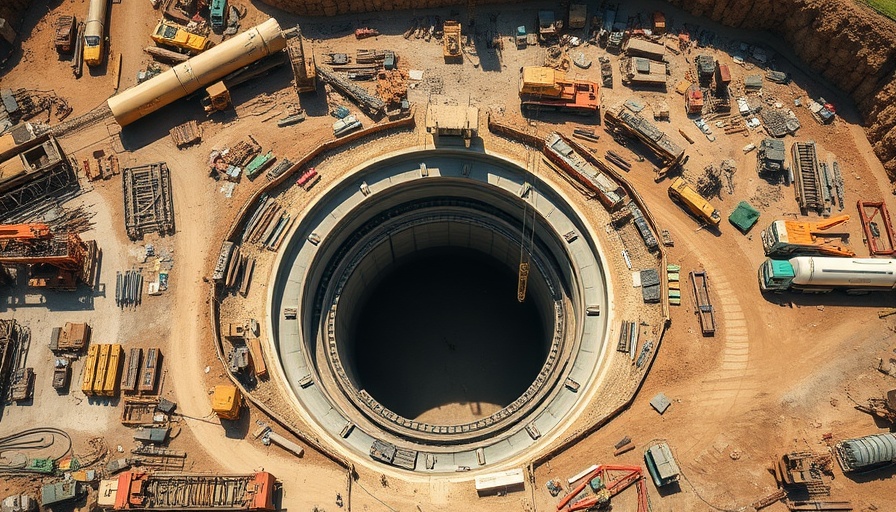
Transforming Construction: The Rise of Autonomous Technology
The construction industry stands at the brink of a technological revolution. With a cumulative funding of $208 million flowing into six innovative contech firms, the sector is rapidly embracing autonomous machinery and artificial intelligence (AI) solutions. Such advancements not only promise increased efficiency and safety on job sites but also aim to reshape the competitive landscape for business owners and property developers.
Noteworthy Players in the ConTech Arena
Among the funded startups, Bedrock Robotics stands out with its impressive $80 million backing. The firm, founded by three former Waymo leaders, is dedicated to enhancing existing heavy machinery with AI-driven upgrades. These modifications facilitate full autonomy, which allows construction operations to function around the clock—ultimately reducing project timelines and boosting profitability. As they approach their goal for operator-less deployment by 2026, Bedrock Robotics exemplifies how innovation can propel the industry forward.
Another key player, AIM Intelligent Machines, secured $50 million and is known for pioneering the world’s first embodied AI platform compatible with a wide range of heavy equipment. This plug-and-play technology can retrofit machines in the field with minimal downtime and offers applications that stretch from mining to earthmoving. The ability to modernize legacy equipment marks a crucial advancement in construction efficiency, especially for projects on constrained schedules.
Financial Implications for Stakeholders
For business owners, developers, and facility managers, the influx of capital into contech startups signals potential shifts in cost management strategies. Implementing AI and autonomous technologies could lead to significant reductions in labor costs, less equipment downtime, and enhanced safety measures—key components in an industry challenged by tight margins and escalating operational costs. As these technologies mature, they may well dictate the future competitive landscape within construction.
Future Predictions: What Lies Ahead for ConTech?
As construction firms begin to integrate more AI-driven solutions, we can expect a major shift in how projects are delivered. Enhanced data analytics will enable real-time decision-making, streamline workflows, and allow better monitoring of job site safety. Furthermore, as sustainability becomes an industry focus, these technologies could support greener building practices by optimizing resource usage and minimizing waste.
Conclusion: Embracing the ConTech Wave
In conclusion, the recent investments in contech startups represent more than just financial transactions; they are a clarion call for the construction industry to embrace technology-driven change. By investing in and adopting these innovative solutions, construction professionals can not only improve project delivery and operational efficiency but also thrive in an increasingly competitive market. For business owners keen to leverage these advancements, staying informed and adaptable will be key to maximizing their investment in the future of construction.
 Add Row
Add Row  Add
Add 




Write A Comment